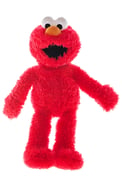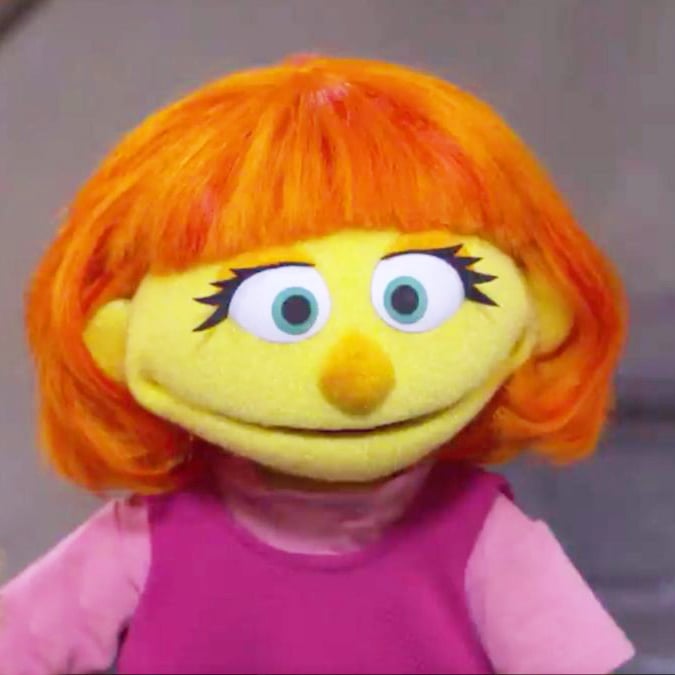5 Ways Sesame Street’s Character Julia Teaches People About Autism Spectrum Disorder
Julia, the new character on Sesame Street can help all children better understand autism.
Sesame Street is a treasured TV show that has educated children worldwide for more than 50 years. It has brought characters like Elmo, Big Bird, Abby, and Cookie Monster into children’s lives and has brought forth lessons that build foundational skills. Through this show, we have learned how to count, how to read, how to sing, how to build relationships, how to channel our emotions, and so much more. In March of 2017, Sesame Street proved that its life lessons are not diminishing. Instead, they are becoming larger than life. Sesame Street introduced its newest character, Julia, to America’s favorite street, bringing knowledge about the autism spectrum to its audience. Here are 5 reasons why this is such a positive initiative in terms of autism awareness:
1. Julia is one of the first children's show characters with a developmental disorder
This is huge for the ASD community because she now serves as an authentic and relatable character for those who are autistic. In her first appearance, she exemplifies notable traits of an autistic child: she repeats what others say, she can avoid eye contact, she can be very quiet, and has very specific interests and sensory needs. This gives autistic children a character in whom they can see aspects of themselves. Sesame Street introduced Julia with their “See Amazing in All Children” initiative, emphasizing the message that we should celebrate the differences we see to cultivate an empathetic and inclusive community. This initiative caters to all viewers of Sesame Street, teaching those who are not autistic skills related to perspective-taking and acceptance, all while providing autistic children with a character they can identify with.
2. Elmo and friends’ interactions promote the development of a child’s theory of mind
 What is theory of mind? Theory of mind is the awareness of your own, as well as others’ thought processes. This aspect of development usually forms as early as the age of four! Hence, Sesame Street is capitalizing on its target audience by teaching this vital skill. One of the first encounters Big Bird has with Julia leaves Big Bird frustrated and discouraged; he thinks that Julia doesn't like him because she does not verbally respond to his greetings. This important teaching moment provides the Sesame Street audience with an understanding of an autistic child’s tendencies, inviting them to think from a perspective other than their own. This understanding helps children with the development of patience, tolerance, and understanding. These are essential traits closely related to theory of mind.
What is theory of mind? Theory of mind is the awareness of your own, as well as others’ thought processes. This aspect of development usually forms as early as the age of four! Hence, Sesame Street is capitalizing on its target audience by teaching this vital skill. One of the first encounters Big Bird has with Julia leaves Big Bird frustrated and discouraged; he thinks that Julia doesn't like him because she does not verbally respond to his greetings. This important teaching moment provides the Sesame Street audience with an understanding of an autistic child’s tendencies, inviting them to think from a perspective other than their own. This understanding helps children with the development of patience, tolerance, and understanding. These are essential traits closely related to theory of mind.
3. Parents can use Julia to teach their non-autistic children about their autistic sibling
What better way to help children interact with their autistic siblings than watching an educational program that demonstrates just that? Watching the ways Elmo and friends interact with Julia in various settings can help parents understand particular traits, tendencies, and exchanges their other children may encounter with their autistic siblings. This provides critical teaching points; when these children are more aware of what an autistic child with autism experiences and how to appropriately interact with him or her, they can begin to transfer those social-emotional learning skills to an amalgamation of settings, educating their peers about how to treat all human beings with acceptance and empathy.

4. Parents can also use Julie to teach their autistic children about regulation and peer interactions
Parents have a role model for their autistic kids; they can begin to show their children just how wonderful they are and how much they can contribute to society. There are other kids just like them, and when faced with a challenge, they can revert to Julia and how she copes. They can point out how Elmo and his friends play with Julia, noting how their peers should interact with them in social settings. Julia’s interactions with Elmo, Abby, Big Bird, and others convey that each of them has different personality traits to bring to the table, but just because they are different, doesn't mean that they should feel left out or excluded in any way. Again, this environment of acceptance and empathy can prevail.
5. Ultimately, Julia reminds viewers to treat others the way they would like to be treated, emphasizing kindness for all
Sesame Street does a fantastic job of conveying real-life interactions with an autistic child, offering suggestions to Elmo and his friends on how to best relate to Julia. In these moments, the creators of Sesame Street send a very important message: treating others the way you would like to be treated creates a world dominated by kindness. Their content is driven by this “golden rule,” inspiring kids to embrace differences, treat others with respect, and that friendship truly has no bounds.

Danielle Fowler
Danielle Fowler has had an interest in child psychology since high school. After pursuing her Bachelor’s Degree in Psychology and Early Childhood Education at Elon University in 2017, Danielle went on to learn more about the child development realm. She earned her Ed.M in Human Development and Psychology from Harvard Graduate School of Education in May of 2018. By July of that same year, she was knee deep in the work of a behavioral counselor at The Manville School, a therapeutic school in Boston, offering proactive social, emotional, and academic supports to students with a range of psychological diagnoses. This job has provided Danielle with a plethora of hands on work and personal experiences working with students on the autism spectrum. Danielle has recently been accepted as a PhD Candidate in School Psychology at UMass Boston and will dive deeper into learning about positive behavior interventions and supports (PBIS) models. Her overall career goal is to become a school psychologist and to work clinically with similarly presenting students as those at her first job site.




